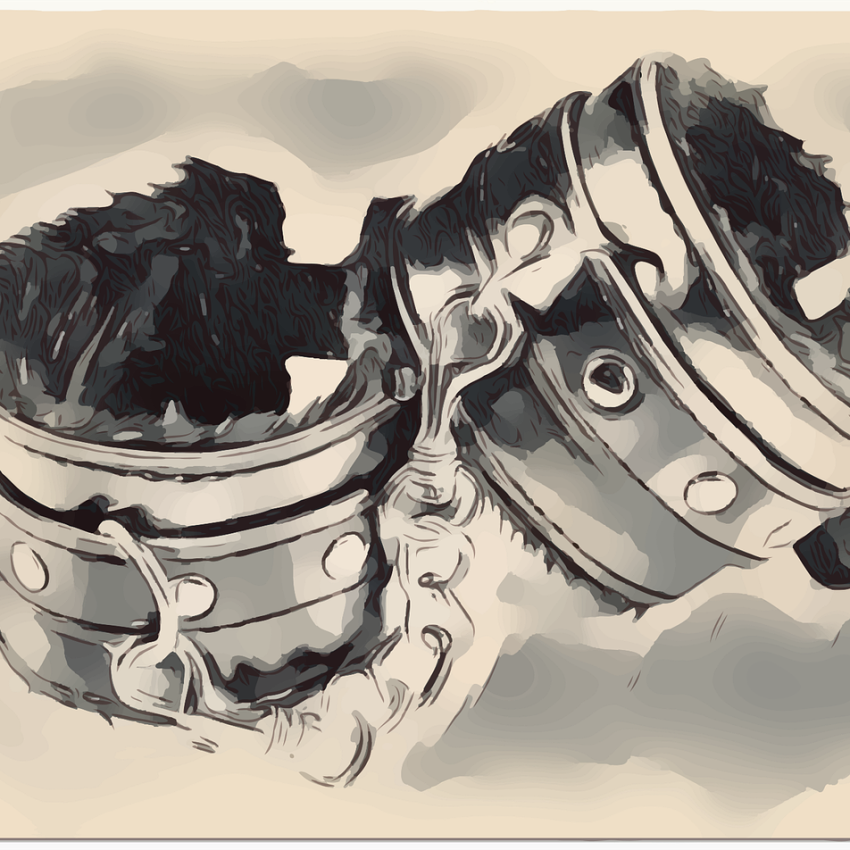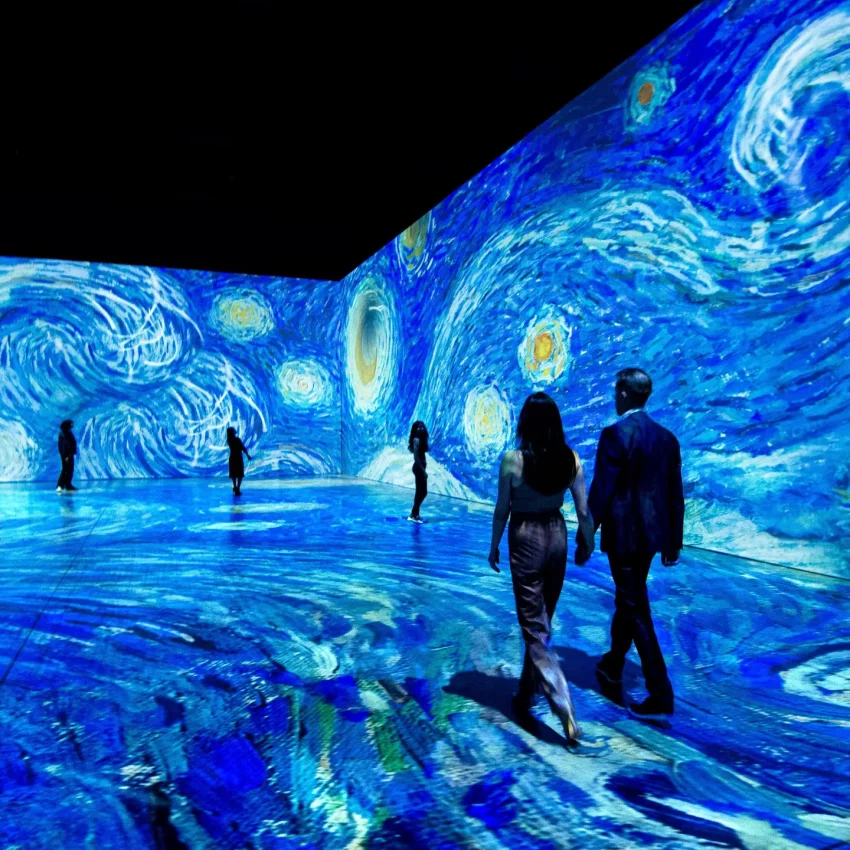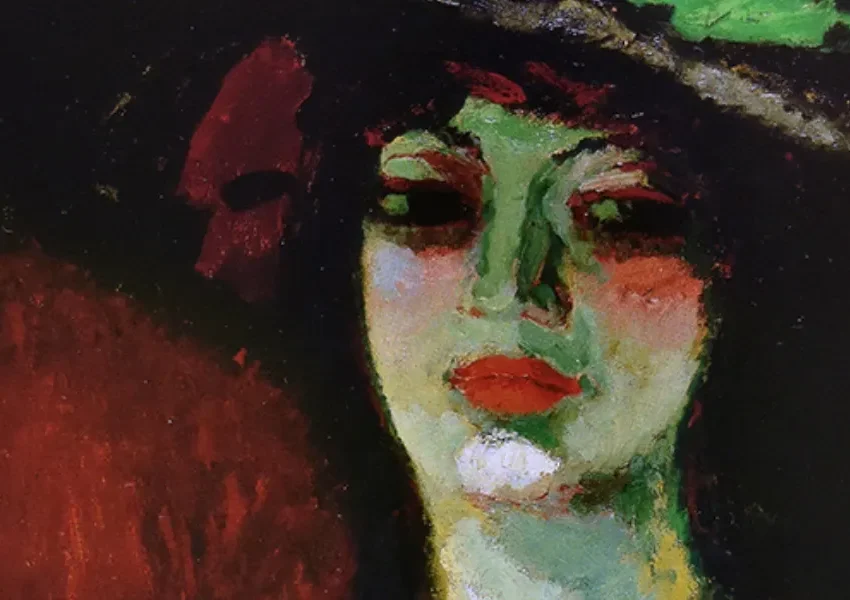Aboriginal Art
A Journey Through Time and Indigenous Australian Culture
Aboriginal art is a mesmerising tapestry that weaves together ancient traditions, spiritual beliefs, and the vibrant landscapes of Australia. Rooted in a history spanning over 60,000 years, this art form transcends mere aesthetics—it is a living testament to the world’s oldest continuous culture. In this article, we delve into the rich layers of Aboriginal art, exploring its origins, symbolism, and enduring significance.
Why Explore Aboriginal Art?
Before we immerse ourselves in the ochre-streaked canvas of Aboriginal creativity, let’s understand why this journey matters:
Cultural Resilience: Aboriginal art is a resilient thread connecting generations. It carries stories, rituals, and wisdom, ensuring the survival of ancient knowledge.
Symbolic Language: With no written script, Aboriginal artists communicate through symbols. Each stroke on bark, rock, or canvas holds layers of meaning—a visual lexicon passed down through time.
Spiritual Connection: These artworks are portals to the Dreaming—the spiritual realm where ancestors, animals, and landscapes intersect. By engaging with Aboriginal art, we touch the sacred.
Origins and Ethos
Time Immemorial
Aboriginal culture traces back to a time when the first settlers arrived in Australia—60,000 years ago. Their ethos found expression in rock art, etched onto cave walls more than 20,000 years ago.
Ochres painted on rocks (also known as rock paintings) told stories of creation, survival, and kinship. This form of ancient art is the oldest of its kind in the world, serving not only as a means of artistic expression but also as a way of transmitting knowledge, traditions, and spiritual beliefs across generations.
The Dreamtime, a central concept in Aboriginal spirituality, encompasses the stories and events of the ancestral past, shaping the cultural identity of indigenous Australians.
Through art, these narratives are preserved and passed down, reinforcing the deep connection between Aboriginal peoples and the land. Each stroke of paint carries layers of meaning, reflecting a profound respect for nature and the spiritual world.
The ethos of Aboriginal art lies in its ability to transcend time, bridging the past with the present and guiding future generations towards a deeper understanding of their heritage.
Symbolic Storytelling
Aboriginal art is a chronicle—a visual saga. Australian Aboriginal people do not have a written language, thus conveying their significant cultural narratives across generations relies heavily on symbolism depicted in their artwork.
Ensuring the transmission of this information is crucial for cultural preservation. These symbols and icons, varying from one region to another, hold universal significance and play a vital role in Australian Indigenous art.
Traditionally, symbols have been integral to contemporary Aboriginal art, serving as powerful vehicles for storytelling and cultural expression.
Symbols convey knowledge of the land, ancestral spirits, and cultural practices. These icons serve as maps, teaching survival skills and ethical behavior. The same symbol may hold different layers of meaning for children and initiated elders.
Within each stroke of paint or dot meticulously placed, lies a story waiting to be told—a story of resilience, connection, and belonging.
Through these symbols, many aboriginal Australians communicate intricate details of their history, customs, and spiritual beliefs, passing down wisdom from one generation to the next.
Each motif represents a chapter in the ongoing narrative of Aboriginal culture, preserving traditions and reinforcing the enduring bond between people, land, and spirit.
As viewers engage with Aboriginal art, they embark on a journey through time and space, unraveling the symbolic language that transcends linguistic barriers and invites contemplation of the profound interconnectedness of all things.
Cultural Protocols
Certain Indigenous symbols and the use of symbols are governed by strict protocols, with some designated for use solely by men, others exclusively by women, and some restricted from being shared outside the community.
Common Australian Indigenous Symbols
Example: ‘People’. The curved U shape frequently used in Aboriginal art symbolises a person, representing the impression left on sand when someone sits cross-legged. Additional marks flanking the human figure can denote gender, with an oval shape and straight line representing a woman’s coolamon bowl and digging stick, and curved or straight lines representing a man’s spears and boomerangs. The meaning of the symbols can be seen in the following image:
Diversity of Symbolism & Different Language Groups
Each Aboriginal language group possesses symbols unique to its culture, region, and Country. While certain symbols may appear similar across groups, their meanings can vary significantly. Despite this diversity, the array of associated stories provides a captivating glimpse into Aboriginal culture and life from various perspectives.
Clan Identity Designs
Indigenous art from Arnhem Land employs intricate clan designs known as miny’tji to denote a person’s identity. These designs, characterized by highly patterned motifs created with specific ochre colors, serve as visual markers of clan affiliation.
Western Desert
The Western Desert refers to a vast arid region located in central Australia, spanning parts of Western Australia, South Australia, and the Northern Territory.
This region is characterized by its vast expanses of sandy deserts, rocky outcrops, and sparse vegetation. It is home to various Indigenous Australian groups, including the Pintupi, Pitjantjatjara, Ngaanyatjarra, and Martu peoples, among others.
The Western Desert holds significant cultural importance as it is the birthplace of the contemporary Aboriginal art movement.
Australian artists from this region, particularly those from central desert communities such as Papunya, Kintore, and Kiwirrkurra, have gained international recognition for their distinctive style of art, which often incorporate intricate symbolism and vibrant colours to depict ancestral stories, dreaming stories, and connections to the land.
The Western Desert art movement emerged in the early 1970s with the establishment of the Papunya Tula Artists cooperative in the remote Papunya community in the Northern Territory.
This cooperative played a pivotal role in facilitating the production and promotion of Indigenous art from the Western Desert region, sparking a broader cultural renaissance and fostering economic opportunities for Aboriginal artists.
Today, Western Desert art continues to thrive, with artists from the region exhibiting their works in galleries and museums worldwide.
The art produced in this region is celebrated for its cultural richness, aesthetic beauty, and profound connections to Indigenous Australian heritage and identity.
Cultural Significance of Arnhem Land, East Kimberley and Torres Strait Islanders
Arnhem Land, East Kimberley, and Torres Strait Islanders contribute significantly to the diverse tapestry of traditional indigenous art, each region offering unique artistic expressions and storytelling traditions. While Cross-hatching (Rarrk) design and x-ray paintings are prominent elements in some regions, such as Arnhem Land and East Kimberley, Torres Strait Islanders bring their own distinctive artistic practices and cultural heritage to the forefront.
Arnhem Land
Arnhem Land, situated in the Northern Territory, is renowned for its vibrant Indigenous art scene, characterized by intricate Cross-hatching (Rarrk) designs and symbolic x-ray paintings.
Artists from this region utilize sophisticated clan designs known as miny’tji, incorporating Cross-hatching (Rarrk) patterns to depict ancestral connections and cultural narratives.
Additionally, symbolic x-ray paintings reveal hidden layers of meaning, offering insights into the spiritual and cultural significance of the depicted subjects.
East Kimberley
Similarly, East Kimberley in Western Australia is celebrated for its diverse Aboriginal art forms, characterized by bold colors and intricate designs. Artists from this region draw inspiration from the rugged landscapes and rich cultural heritage of the Kimberley, incorporating symbols and motifs that reflect their deep connection to the land and ancestral stories.
Torres Strait Islanders
The Torres Strait Islands, located between the northern tip of Queensland and Papua New Guinea, are home to a distinct Indigenous culture with rich artistic traditions.
Torres Strait Islander art is known for its intricate woodcarvings, intricate dance performances, and vibrant textile arts.
These artistic practices reflect the unique cultural identity and maritime heritage of the Torres Strait region.
Cultural Diversity and Exchange
Both Arnhem Land and East Kimberley contribute to the rich tapestry of Australian Indigenous art, each region offering a unique perspective on cultural identity and heritage.
The artistic traditions of these regions are characterized by a multiplicity of meanings and symbols, reflecting the diverse linguistic and cultural landscapes of Aboriginal Australia.
Integration into Contemporary Art
In contemporary Aboriginal art, influences from Arnhem Land and East Kimberley are evident, with artists blending traditional techniques and motifs with modern artistic practices.
This integration allows for the preservation of cultural traditions while also facilitating innovation and experimentation within the art form.
Regional Distinctions
While Arnhem Land and East Kimberley share similarities in their artistic traditions, each region also possesses distinct cultural characteristics and artistic styles.
The miny’tji designs of Arnhem Land, for example, differ from the bold and dynamic artworks of East Kimberley, reflecting the unique cultural contexts and histories of each region.
Contribution to Cultural Exchange
The artistic contributions of Arnhem Land and East Kimberley extend beyond their respective regions, enriching the broader Australian Indigenous art landscape.
Through exhibitions, collaborations, and cultural exchanges, artists from these regions share their stories, traditions, and perspectives with audiences worldwide, fostering greater appreciation and understanding of Aboriginal art and culture.
Indigenous Australian Art: Evolution of Expression
Watercolours and Hermannsburg
In the 1930s, a significant evolution occurred in Aboriginal art with the introduction of watercolors.
This transformative period saw artists from the Hermannsburg mission, located in central Australia, capturing the stark beauty of desert landscapes with remarkable skill and sensitivity.
Among these artists, Albert Namatjira emerged as a pioneering figure, renowned for his breathtaking watercolour depictions of the Australian outback.
Namatjira’s works, which portrayed the rich colors and rugged terrain of the desert, gained widespread acclaim and were exhibited in galleries across Australia, particularly in Adelaide.
The adoption of watercolors represented a departure from traditional ochre-based mediums and marked a pivotal turning point in the development of Aboriginal artistic expression.
The Birth of Contemporary Indigenous Art
In 1971, the trajectory of Indigenous Australian art took a monumental shift with the visionary efforts of Geoffrey Bardon.
Working as a schoolteacher in the remote Papunya community, Bardon encouraged Aboriginal men to translate their sacred sand-drawn symbols onto canvas, thus igniting what would come to be known as the Aboriginal art movement. This pivotal moment heralded a new era of artistic innovation and cultural resurgence.
Artists such as Emily Kame Kngwarreye and Clifford Possum Tjapaltjarri embraced acrylic paints, dot painting techniques, and narrative storytelling to convey profound cultural narratives and spiritual connections to the land.
Their works, characterized by intricate patterns, vibrant colors, and symbolic imagery, served as powerful expressions of Indigenous identity and resilience.
Through their art, these trailblazing artists challenged conventional artistic norms, reshaping the landscape of contemporary Indigenous art and inspiring future generations of artists to explore new creative possibilities.
Diverse Styles and Techniques
Dot Painting
Dot painting, a hallmark of contemporary Aboriginal art, is characterized by its meticulous use of tiny dots to create intricate patterns and designs. This technique, rooted in Indigenous cultural traditions, holds profound significance, often representing Dreaming tracks, waterholes, and ancestral journeys across the landscape. Each dot carries layers of meaning, weaving together narratives of connection between the earthly and spiritual realms. The vibrant palette of colors dances across canvases, evoking the rich hues of the Australian landscape and infusing the artwork with vitality and energy. Through dot painting, artists express their deep spiritual connection to the land, conveying timeless stories and traditions that have been passed down through generations.
Bark Paintings
Bark paintings stand as a testament to the rich cultural heritage of Indigenous Australians, particularly those from regions where bark is readily available, such as Arnhem Land. Utilizing the textured surface of bark as their canvas, artists skillfully depict clan stories, animal totems, and sacred sites. The natural contours of the bark lend a sense of organic authenticity to the artwork, mirroring the undulating landscapes of the Australian bush. Each brushstroke, applied with precision and reverence, imbues the bark painting with layers of meaning and significance. These paintings serve as visual records of cultural knowledge and spiritual beliefs, preserving ancestral wisdom for future generations. As viewers engage with bark paintings, they are transported into a world where stories unfold like the bark itself, revealing the interconnectedness of Indigenous peoples with the land and the enduring vitality of their cultural traditions.
Legacy and Global Impact
Albert Namatjira’s Legacy
Albert Namatjira, a trailblazing figure in the realm of Australian Indigenous art, left an indelible mark on the artistic landscape with his pioneering watercolour paintings. Namatjira’s works served as a bridge between cultures, capturing the essence of the Australian outback with unparalleled beauty and depth. Through his masterful use of color and light, Namatjira conveyed the rugged majesty of the desert landscape, evoking a sense of wonder and reverence in viewers worldwide. His ability to depict the subtle nuances of the Australian bush earned him widespread acclaim, and his artworks continue to resonate with audiences, both in Australia and beyond. Namatjira’s legacy endures as a testament to the power of art to transcend cultural boundaries and connect people across the globe.
Beyond Borders
Aboriginal art transcends geographical borders, captivating audiences in galleries, museums, and private collections around the world. Artists like Rover Thomas and Judy Watson have played instrumental roles in shaping the trajectory of Indigenous Australian art on the global stage. Their innovative approaches and distinctive artistic visions have garnered international recognition, elevating the profile of Aboriginal art to unprecedented heights. Through their evocative works, these artists explore themes of identity, culture, and land, offering profound insights into the rich tapestry of Indigenous Australian heritage. As Aboriginal art continues to gain prominence on the global stage, it serves as a powerful testament to the resilience and creativity of Indigenous peoples, inspiring audiences to engage with and appreciate the diverse cultural traditions of Australia’s First Nations.
Fine Art and Women Artists in Aboriginal Art
Fine Art as a Platform for Expression
Fine art serves as a dynamic platform for Aboriginal artists, providing them with opportunities to explore and express their cultural heritage in innovative ways. Through mediums such as painting, sculpture, and printmaking, Indigenous artists assert their presence and assert their unique perspectives on identity, spirituality, and land. The inclusion of Aboriginal art within the realm of fine art elevates its status, validating its significance as a vital form of cultural expression that resonates both locally and internationally.
Women Artists: Shaping the Narrative
Women artists play a significant role in shaping the narrative of Aboriginal art, bringing their distinct voices and perspectives to the forefront of the artistic landscape.
With creativity and resilience, female artists challenge stereotypes and break barriers, contributing to the rich diversity of Indigenous Australian art.
Through their artworks, women artists explore themes of femininity, motherhood, and community, offering insights into the complexities of Indigenous women’s experiences and perspectives.
Their contributions enrich the cultural fabric of Aboriginal art, fostering greater inclusivity and representation within the artistic community.
The participation of women artists in Aboriginal art reflects a broader movement towards gender equality and diversity within the arts.
As their visibility and recognition continue to grow, women artists serve as role models and inspirations for future generations, empowering Indigenous women to pursue their artistic passions and assert their cultural identities.
By amplifying the voices of women artists, Aboriginal art becomes more inclusive and representative of the diverse experiences and perspectives within Indigenous communities.
Ultimately, the contributions of women artists enrich and enliven the artistic landscape, ensuring that Aboriginal art remains vibrant, relevant, and reflective of the ongoing evolution of Indigenous cultural identity.
conclusion
The history of Aboriginal art is intertwined with the cultural identity of indigenous Australian peoples. It serves as a visual narrative of their connection to the land, dreamtime stories, and spiritual beliefs. Rock art found in places like Alice Springs and Arnhem Land provides glimpses into ancient practices, while contemporary Aboriginal paintings from Papunya and the Western Desert showcase the evolution of artistic expression.
One of the most iconic styles of Aboriginal art is dot painting, characterized by intricate patterns of dots that symbolize elements of nature, ancestral stories, and sacred sites. Ochre, derived from natural pigments, is commonly used to create these artworks, which often feature vibrant colors reflecting the Australian landscape.
Contemporary Aboriginal art has gained recognition in international art circles, with galleries worldwide showcasing the works of indigenous artists. Artists like Clifford Possum and Emily Kame Kngwarreye have contributed significantly to the contemporary Aboriginal art movement, blending traditional techniques with modern influences.
Bark painting, another traditional form of Aboriginal art, originates from the Kimberley and Arnhem Land regions, depicting stories and cultural motifs on tree bark using natural pigments. X-ray paintings, prevalent in the northern territories, depict animals and humans with internal organs exposed, symbolizing ancestral connections and spirituality.
Aboriginal art is deeply rooted in indigenous culture, serving as a means of preserving heritage and passing down knowledge through generations. It encompasses a wide range of styles and mediums, from ceremonial body paint to intricate sand paintings, each with its own significance and symbolism.
Art galleries play a crucial role in showcasing Aboriginal artwork and promoting cultural understanding. They provide a platform for indigenous artists to share their stories and perspectives with a global audience, fostering appreciation and respect for Australia’s rich cultural diversity.
In remote Aboriginal communities across Australia, art centers serve as hubs for creativity and cultural exchange, supporting artists and preserving traditional practices. Through art, indigenous peoples continue to celebrate their identity, strengthen community ties, and share their unique perspective with the world.





